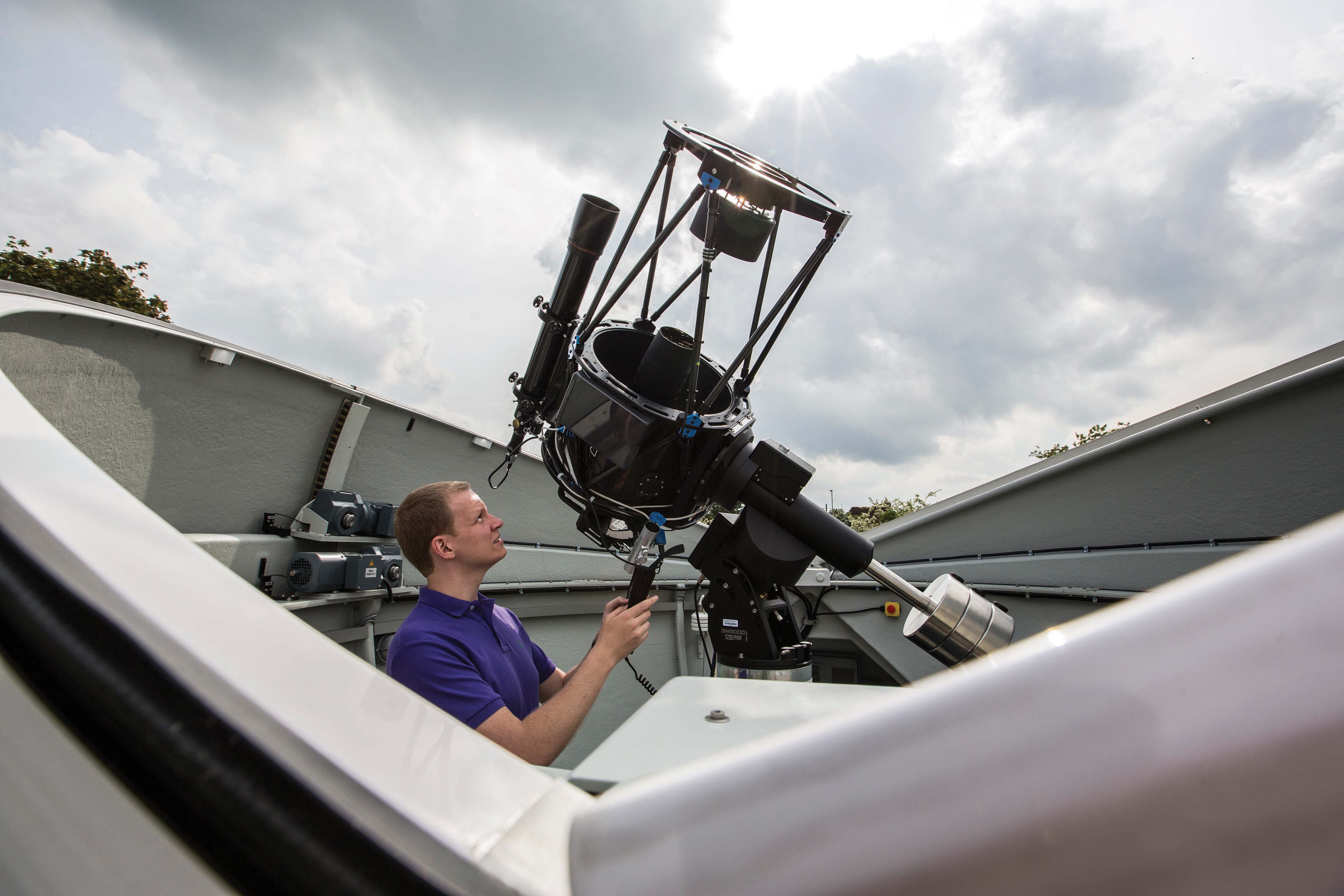We know there is life on Earth, but is there any life anywhere else ? This quandary can be summed up in the diagram below which describes the possibilities for the distribution of life:
The 5 possibilities in the above figure are all valid, we simply do not know which is correct. The idea is that there may be life on Earth and also perhaps in space. By having the circles for each of different sizes the relative amounts of life in each place are being expressed (big circle = relatively a lot of life, little circle = relatively little life). Finally, if the circles overlap, it is being suggested that life might mix between the two locations, i.e. life might naturally travel through space to or from the Earth.
The idea of life naturally travelling through space may seem strange. But it is a scientific hypothesis of long standing. It has a name – Panspermia. Several versions exist. Pure Panspermia has life originating in space itself and travelling to planets. Other views hold that comets somehow carry life and that whenever our planet passes through a comet’s tail, the dust and debris that falls into the atmosphere can carry this life. Rocky (or litho-) Panspermia holds that life starts on one planet, is then ejected in to space (perhaps as ejecta from the giant impact of an asteroid or comet) and then falls on a meteorite onto a new planetary surface. Certainly debris from space does rain down upon the Earth. Rocks of Lunar and Martian origin have been recovered on Earth as meteorites. Claims have indeed been made that one such Martian meteorite contained possible fossil bacteria.
So speculation about topics like Panspermia is not as silly as it might sound to some. But the scientific study of an idea requires more than just speculation.
Research into Panspermia at Kent
We have been considering the steps involved in rocky Panspermia. A lump of rock would have to contain bacteria. Not an implausible assumption (if there is life on the planet in the first place !). A giant object then falls at high speed (many km s-1) from space causing a massive impact, leaving a crater on the landscape, maybe kilometres across. This sounds dramatic, but it happens. The Moon and Mars are peppered with impact craters. Even the Earth carries the scars of such impacts. As part of the impact process rocks will be ejected away from the impact site at high speed, maybe even at escape velocity (i.e. fast enough to leave the planet and not return). Such a rock would then travel through space and could eventually hit another planet (again at high speed).
In Canterbury, we have been investigating what happens to bacteria carried in projectiles accelerated to speeds of 5kms-1 which then hit targets. We use a two-stage light gas gun to accelerate the projectiles.
Results
In our preliminary work, we failed to recover any viable bacteria from the impact site. However, more recently we have at last been successful. In Burchell et al. 2002 we describe how we successfully recovered viable bacteria after an impact at 5kms-1.
The Future
Having achieved this success, we are now determining survival rates as a function of impact speed, for different target types, for spores as well as bacteria, etc. We are also improving techniques for recovery/identification of bacteria at the impact site.
Who?
Work at Kent is led by Prof. Mark Burchell in the Centre for Astrophysics and Planetary Sciences, and Dr. Alan Bunch in the Department of BioSciences, assisted by research students: Jo Mann is currently in the final year of her PhD on this topic (funded by the University Alumni fund) and James Galloway has completed an MSc on the work.
Publications
Burchell, M.J., Cole, M.J., McDonnell, J.A.M., and Zarnecki, J.C. 1999. Hypervelocity impact studies using the 2 MV Van de Graaff accelerator and two-stage light gas gun of the University of Kent at Canterbury. Meas. Sci. Technol. 10, 41-50.
Burchell M.J., Shrine N.R.G, Bunch A.W. and Zarnecki, J.C., 2000. Exobiology: Laboratory tests of the impact related aspects of panspermia. In: Gilmour, I., and Koeberl, C. (eds.) Impacts and the Early Earth pub. Springer pp 1-26.
Burchell M.J., et al., 2001. Laboratory Investigations of the Survivability of Bacteria in Hypervelocity Impacts. Advances in Space Research 28,707-712.
Burchell M.J., Mann J., Bunch A.W. and Brando P.F.B., 2002. Survivability of Bacteria in Hypervelocity Impact. Icarus 154, 545 – 547.
